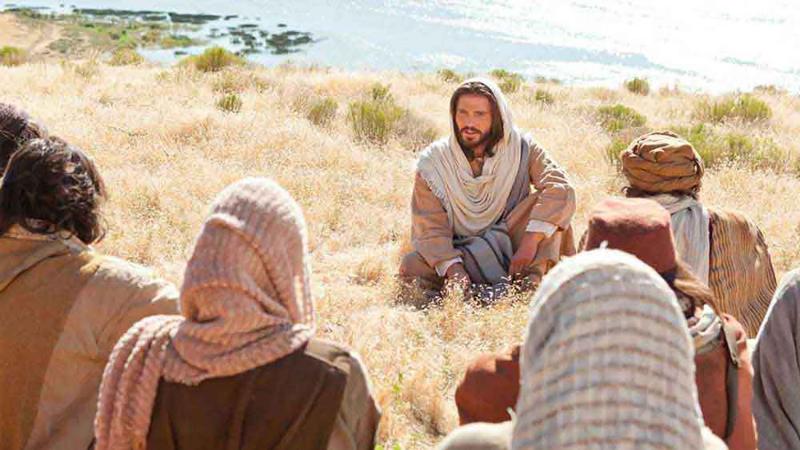
Complimentary Story
March 2024Over the years that I have known the Lord, I’ve had questions about how things were happening in the Bible regarding Christ’s life and those around Him. I have asked many people and educators, but never could get a straight and/or consistent answer so decided to do some research myself. What follows are some of the things that I learned.
One of the first things that I researched was, what was a rabbi at the time of Christ? The reason I did this was that is the title was given to Him and I needed to know if that is the same as a rabbi today. I found that is not the case. A rabbi today is more like what we would call a pastor, who has a home synagogue and ministers to his flock. That was not the situation at the time of Christ. Rather, they were itinerant teachers who had no set home. They went from place-to-place teaching and depended on the local people for support.
Before I get too far, I will also discuss the education system at that time, as it does impact heavily on the power of a rabbi. I had been told that the people at that time were not very educated and very few could read or write. After researching this, I learned it to be just the opposite. I found they had a very good education system. It was based around the synagogue, where each had their own elementary school. Starting around the age of five, children began being taught and they were taught out of the Torah. This included reading and writing along with memorization.
This form of study was done to about the age of ten. After that, they began studying Mishnah, or oral law, until approximately the age of twelve or thirteen when they then became eligible to study the Talmud, which are the rest of the writings of the Old Testament as we know it. Most of this was done by memorization, as they lacked suitable writing materials. The fact that there was so much memorization being done at this time has a big bearing on what and how Jesus taught and how the people responded.
It was during this education process at the age of twelve or thirteen the student had to appear before their elders and scribes to be tested. If they were found to have learned what was required at this point, they were then able to advance on to midrash (commentary on Scripture) and halachah (rabbinic rulings). They did this along with the study of the Talmud. Now if we remember from our Scriptures this is the exact age that Jesus appeared before the elders who were amazed by His depth of knowledge and understanding. This group of elders was the group that Jesus would have studied with for further advanced education.
We now have Jesus learning oral law which included Halachah (to walk or go). Another way of putting this is, “this is the way to live your life.” He would have also studied Haggadah (to draw out, to narrate or tell) which is about moral and ethical instruction about personal faith and the ways of God. The main purpose of this was to reach and touch the heart and mind of man so that he would know God and adhere to his ways.
While Jesus was being taught and practicing, He was also learning a trade. As a rabbi or teacher, He either needed to be self-sufficient and/or depend upon gifts from His sponsors or followers. We learn this from examples in the Bible regarding Jesus and showing that all the apostles had occupations that they could resort to, such as Peter being a fisherman and Paul being a tent maker. Jesus would have continued these studies through His teen years into His twenties, still learning, but doing more teaching the older He became.
There were many different levels of rabbis, and the different levels were determined among the rabbis themselves. You could determine the level of rabbi by the stole/shawl that he wore. There were also two different types of rabbis. The first was the Torah teacher who was only allowed to teach and expound on accepted Torah teachings. A Torah teacher/rabbi was not allowed to establish new thoughts or concepts. The second type was a Semikah (authority). This rabbi had mastered the Tanakh (Old Testament) which allowed them to give new teachings or insights as they had garnered more respect. We know of only about a dozen rabbis who had this title in the century around the time of Christ, two of whom are Gamaliel and Hillel as they are mentioned in the Bible. We know Jesus, as a rabbi, was a Semikah as we are told in numerous places in the Bible that He spoke and taught with authority. He was even questioned about it by the different people and groups. To be a Semikah you had to be at least 30 years old, which corresponds to the age when Jesus began His ministry.
We must remember that most of the rabbis were itinerant and traveled from place to place. They conducted their classes wherever they could, for example, in the village square, in someone’s home, or in a synagogue. A rabbi was also dependent upon the generosity of the community because, according to tradition, they could not charge for teaching the Scriptures. If you wanted to follow a certain rabbi this meant that you had to travel with them. It was considered a great honor to be asked to follow a rabbi of importance, so much that it was common to drop what you were doing to go, with the blessing of the community. When a person did this, it was referred to as “picking up the burden” or “yoke” that was given to them by the rabbi. This burden/yoke was the teachings of the rabbi. Most higher-ranking rabbis taught in the Haggadah style, which used parables and stories to focus on the application of God’s word to everyday life.
Now let’s turn to Nazareth and the land of Galilee where I learned that much of what we have been told is simply not true. Galilee, at the time of Christ, was neither a desert nor a wilderness, but rather a very moderate well-watered country. It had fertile farms, a profitable fishing industry, and was noted to have had over 200 small towns and villages along with four large cities. During this time, Herod Antipas had taken on building projects in the area, one being the Tiberias on the shore of Galilee as a lakeside resort. Another was the rebuilding and expansion of Sepphoris which had been destroyed. At this time, Sepphoris was the capital of Galilee.
Sepphoris, a Roman community, lies within one-hour’s walking distance north of Nazareth. Most workers lived outside the city. The economic impact on the area for these building projects was enormous. They needed skilled craftsman to do the work (carpenters, stone masons, painters, and mosaic artists), freight haulers for supplies, and vendors. A good farming network was required to supply the food and other necessities for these workers. In other words, you had a very vibrant community and not a backward one which we have been led to believe. Joseph, along with his family, would have been part of this, which meant Jesus was very capable with all His training to be a rabbi and have the needed support in a trade and not be a hardship on others.
There are further differences between Galilee and Judea that we should mention before we continue as it does impact how we view Jesus. Judeans felt that Galileans were a more mixed population and not the pure sons of Abraham; they were. Galilee was also separated from Judea by Samaria, so they felt that they weren’t part of them. Galilee was also in a different political area than the Judeans. The Galileans were ruled by a Herodian prince and Judea and Samaria were under direct Roman rule since 6 A.D. Economically, Galilee had better agricultural, fishing and manufacturing resources than the mountainous Judean landscape. Culturally, Judeans despised the Galileans because of their lack of Jewish sophistication and their openness to Hellenistic influences. In short, they regarded them as backwards country cousins. The Judeans had the opinion that the Galileans were also lax in observing the proper rituals in worshiping God since Jerusalem was in Judea and not Galilee, which meant they could do it correctly. Lastly, Galileans spoke a distinctive form of Aramaic whose slovenly consonants they dropped (like a southern drawl) which made them the butt of Judean humor.
Now that we have some of the background, we need to apply it to the Gospels, so it becomes clearer as to how things happened. The first is at the baptism of Jesus when He approached John and John exclaimed that Jesus was greater than him and he was not worthy to baptize Him. If Jesus was wearing His stole, John would immediately recognize Him as a great rabbi which would account for when John was in prison, and he sent his disciples to ask Jesus if He was the one and Jesus answered them by saying “let the lame walk and the blind to see.” Jesus was referring to the prophecy concerning the Messiah. With the education that they had gotten in school, they now knew exactly which prophesy Jesus was referring to and John had his answer. The next is the calling of the disciples and why they dropped everything to follow Jesus. As we have learned, it was a great honor to be asked by a Shimekah rabbi to follow him. By knowing this we can also understand His teaching style and why the people responded to it. We know that if He removed his stole, He would be able to blend into the crowd and slip away. This status of rabbi would also account for why the temple priests could not do anything to Him and had to do it in the dark of the night. There are many other instances that would make more sense with this understanding.
With that being said, the miracles that He did and the teachings that He taught, His death, resurrection and ascension into heaven, all prove He was the Messiah.
I find it amazing how God used the institutions and customs of the day to fulfill His promise to us, but I find it equally sad that we have lost information when it was decided at the Council of Nicea to take and remove this information from common knowledge. If we still had this information, the work of God would be easier to understand, and His glory would rise to even greater heights and wonders.



